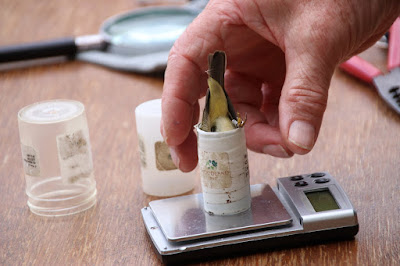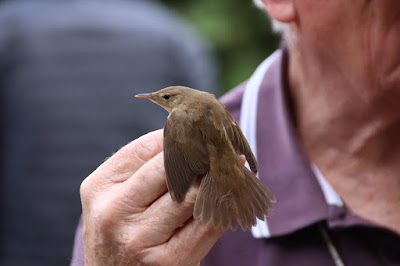For the last birding session of September I decided to give Landguard a visit, maybe because I couldn't really think of anywhere else to go. Landguard is fairly dependable for attracting migrants, so I thought it would be worth a visit. To some extent it was worth a look, as there were a lot of birds present, its just they were all the usual fare, the sort of migrants you would expect on a late September day.
The shape of the reserve, sticking out into the sea and the river Stour, makes it a migrant hotspot, its an inviting place for tired birds to land.
In the dunes, between the beach and the grasslands, there was a flock of 100+ FINCHES - LINNETS and GOLDFICHES - feeding in a tightly knit group. It was hard to know how many there were as small flocks within the larger one would fly in the air and settle only a short distance away, making a vague estimate the only number I could bring together.
There was also a large flock of 100 STARLINGS, again an estimate. They would fly in the air at the constant disturbance reeling around in impressive murmarations. These birds are present all Summer as the birds that nest in Felixstowe town come out here to feed.
Summer kept a toe hold into September with the last migrants of the season still present in small numbers. A couple of WHEATEARS were about as usual in the southern open areas, a species I haven't encountered much this Autumn, so were nice to see. On the hill around the observatory there is a small area of woodland and there was a SPOTTED FLYCATCHER present as well as a couple of CHIFFCHAFFS.
The old sea watching hide - the point is full of crumbling old buildings built over the past.
Just offshore a MED GULL flew south, its all white wings unmistakable, and two SANDWICH TERNS followed a bit later on, moulting into their winter plumage.In the end today was just the standard fare for September, a fare that is still a fairly impressive haul for just a couple of hours. Its really heartening that even in these days of environmental destruction, there are still birds left in reasonable numbers, birds still clinging on in the countryside. Who knows, maybe in the future I will look back and see this as a low point, that in the future there may be more birds, but most likely there will be less and I will look back at this time as a golden age, before the effects of environmental destruction really kicks in.




































